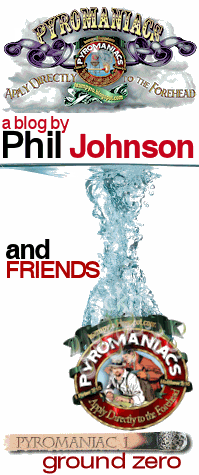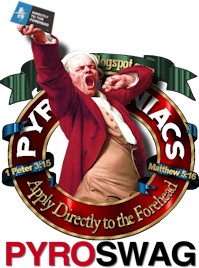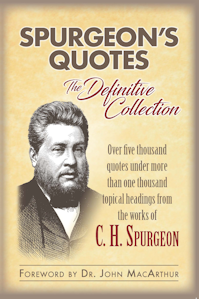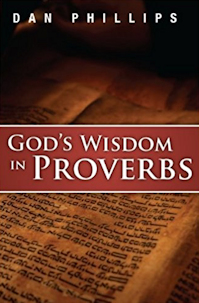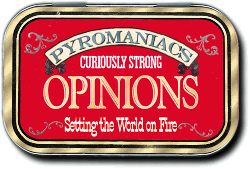
This feature enters the murky depths of the archives to fish out the classic hits from the golden age of internet drubbings.
The following excerpt was written by Frank back in October 2011. Frank discussed proper and improper views of Truth and Unity within the church.

Here's a picture we might call "Unity in Truth," right? A simple Venn diagram which puts all aspects of "Unity" as a subset of "Truth," and I think it's easy, when you see "Unity" this way, you can (and must) believe that as long as you're talking about "Unity," you must be talking about "Truth."
There are some transparent problems with this. For example, if you start talking about having spiritual solidarity with Muslims because all Unity is a subset of Truth, you are off the rails -- because you are denying some part of what is True in order to obtain Unity. This view of Unity and Truth doesn't actually work.
So let's try another one:
Figure #2

This one eliminates the problem that the first one had by illustrating that there are some aspects of "Unity" which are actually not part of "Truth" -- but it assumes that if you are talking about "Truth" you will automatically demonstrate "Unity." That is, all Truth is in Unity, but some Unity is outside Truth.
Hey: this is the Internet, folks. You don't have to go very far to find contrafactual evidence for that statement. So let's toddle over to yet another attempt to diagram the relationship between "Truth" and "Unity" in order to have a reference point mentally for what we ought to be talking about when we say something like "Unity in Truth."
Figure #3

To which all the readers say, "Aha!"
On the one hand, we have the kind of Unity which is absent from the Truth; on the other hand, we see that some kinds of Truth have nothing to do with Unity; and on the third hand we see that there is a place where we find Unity and Truth together. This is the one which should help us visualize the relationship between Truth and Unity.
But so what? Why break out the Gadfly color scheme and make us think using something other than words on a Friday? Well, here's what:
Figure #3A

This is what we need to talk about. There are probably 10,000 applications of Figure 3 -- like how to think about the "Occupy" movement, for example -- but Figure 3A here now makes us think about US for a second in a way that isn't going to be self-congratulatory. Because the first thing we have to realize or recognize is that the church, walking around today (as it has from the day after Pentecost) really looks more like this:
Figure #4

That is: while we would love it that the Church actually is the place where Truth creates Unity and Unity reinforces Truth, we actually have some places where we are unified over the wrong things, and we are clinging to kinds of Truth in a way that harms Unity, and we also have things we do which are neither in Truth nor in Unity -- and these are, by a lot, our worst moments. This is what the LBCF means when it says, "The purest churches under heaven are subject to mixture and error; and some have so degenerated as to become no churches of Christ, but synagogues of Satan; nevertheless Christ always hath had, and ever shall have a kingdom in this world, to the end thereof, of such as believe in him, and make profession of his name." The Church ought to be the place where Unity and Truth intersect, but because we are talking about people here and not a bag of dimes, it's not going to be a uniform thing from the standpoint of what is and isn't inside it.
We can make a big thing of this because the church is actually tasked to be Figure #3 in spite of actually being Figure #4 -- in fact we must make a big thing of it, if we believe our Bibles as we say we do. We make a big thing out of it because what the Confession warns us about is becoming this:

What we categorically do not want is to become so concerned with Unity that we are simply giving up on Truth for Unity.
Last thing today: this is the struggle which produced the confessions and the creeds. This concern about how much truth needs to be present in our unity is what caused the Church (big "C") to make creeds and confessions so that the clarity of the Gospel -- the whole Gospel, and all its necessary consequences -- can be both proclaimed and received. When we choose a path -- no matter who we are, no matter what else we have accomplished for Christ's sake in the course of out lives -- which abates the drift, above, we are doing it wrong. We are part of the problem and not part of the solution.


